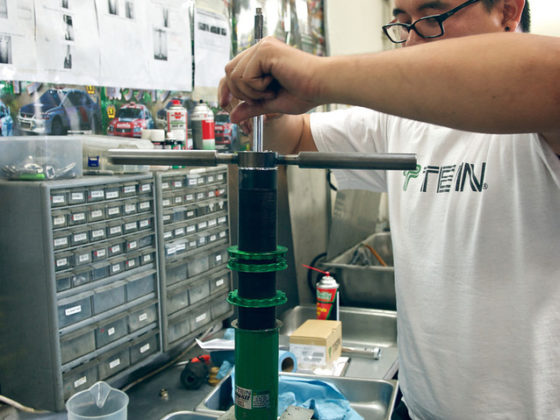 McLaren did a great job evacuating the hot air from the side coolers and engine bay via hatch-mounted vents and primarily through the rear bumper which is heavily vented and houses the exhaust outlets. This makes perfect use of the low pressure area behind the car which helps to suck the hot air out of the engine bay and through the heat exchangers.
McLaren did a great job evacuating the hot air from the side coolers and engine bay via hatch-mounted vents and primarily through the rear bumper which is heavily vented and houses the exhaust outlets. This makes perfect use of the low pressure area behind the car which helps to suck the hot air out of the engine bay and through the heat exchangers.
 The MP4-12C (which is a mouthful to say and was later known just as “12C”) is competitively priced at $240,000 to the 458’s $235,000. It also makes just 5 horsepower less than the F1, which in today’s money would cost $1.8 million; and used F1s have sold for over $8 million. I think that makes the 12C a heck of a bargain.
The MP4-12C (which is a mouthful to say and was later known just as “12C”) is competitively priced at $240,000 to the 458’s $235,000. It also makes just 5 horsepower less than the F1, which in today’s money would cost $1.8 million; and used F1s have sold for over $8 million. I think that makes the 12C a heck of a bargain.
INSIDE A 12C
Like the F1, the 12C is an engineering marvel. I tend to geek out on this kind of stuff and find the beauty in form when it’s crafted by function. However, engineering can be a double-edged sword and too much of it can be sometimes work against you and be frustrating. For example: while I only had 2 days with the car, I had a difficult time just trying to get the door open. The 12C replaces door handles with a sensor below the door sill by the side intakes which unlock the door when you run your fingers along it.
 Over half of my attempts, including sweet talking, and nice pets were met by an unopened door.
Over half of my attempts, including sweet talking, and nice pets were met by an unopened door. The doors open in the same “butterfly” style as first introduced on the Alfa Romeo 33 Stradale and have been used commonly in prototype racecars and of course, the McLaren F1.
The doors open in the same “butterfly” style as first introduced on the Alfa Romeo 33 Stradale and have been used commonly in prototype racecars and of course, the McLaren F1.Another way to unlock and open the door is by double clicking the unlock button on the key FOB, then repeating (or holding?) the unlock button to open the passenger door. While I had better luck with this method, I still frequently found myself with unopened doors. Tthere are some 12C owners are rolling their eyes reading this but this is exactly what I’m talking about when I said too much engineering can be frustrating. I’m sure I would figure it out after reading the manual or having more time with the car, but McLaren often comes up with clever and complex solutions to replace simple devices like door handles.
 Exposed carbon fiber eye-candy puts a smile on my face every time I open the door.
Exposed carbon fiber eye-candy puts a smile on my face every time I open the door.Thankfully McLaren kept the dihedral doors from the F1 which open to expose a bare carbon fiber tub which a sight to see. Since the chassis is a monocell ‘tub’, you ironically need to crawl over the high sills and drop into the highly supportive seats. While the door moves up and out of the way, exiting the car requires a similar effort of lifting up and out of a bathtub rather than side-stepping out of a normal car.
 The McLaren 12C’s carbon fiber tub weighs in at a mere 176lbs, is made from a handful of major sections, and is assembled in just four hours at less than 1/10th of the cost of the McLaren F1’s chassis which took 4,000 hours to produce.
The McLaren 12C’s carbon fiber tub weighs in at a mere 176lbs, is made from a handful of major sections, and is assembled in just four hours at less than 1/10th of the cost of the McLaren F1’s chassis which took 4,000 hours to produce.While it is a lot easier to get in and out of than say an Elise, it’s more difficult than a Viper and female companions may protest wearing a dress in the 12C as to not expose themselves like Paris Hilton when getting out of the car. Due to the very wide and tall sills, anyone shorter than 5’ 10” will struggle to be able to put their foot on the ground when getting out of the car without literally ‘hopping’ out. The 12C loses to a 458 or 911 here, but that’s the price you have to pay for a carbon tub chassis; although it may not be an issue if you’re dating or married to a gymnast or tall Amazonian woman. To close the door, you have to reach up to the door handle and ‘slam’ it shut with a ton of force, which I hate doing in cars. I’m not sure if this has to do with a special McLaren locking mechanism that was designed this way or simply quality control issues at the plant in Surrey, England.



